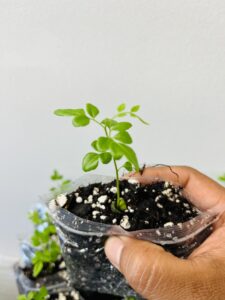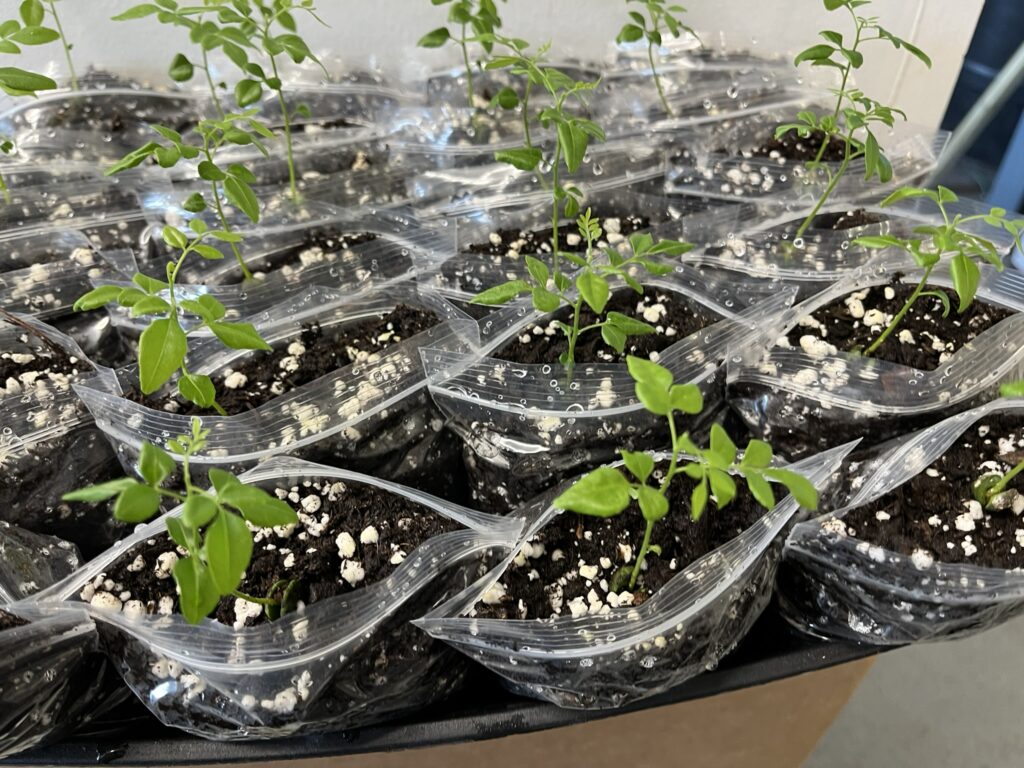Introduction to Curry Leaf Plants
What is the Curry Leaf Plant?
The curry leaf plant (Murraya koenigii) is a small evergreen tree native to the Indian subcontinent, loved for its aromatic leaves used in Indian, Sri Lankan, and Southeast Asian cuisines. These leaves add a distinct flavor to curries, dals, soups, and rice dishes.

Origin and Significance
Known as Karipatta in Hindi and Kariveppilai in Tamil, the plant is deeply rooted in South Asian culture—not only for cooking but also for its traditional medicinal uses in Ayurveda.
Botanical Description & Names
Scientific Name: Murraya koenigii
Named after botanist Johann Koenig, this plant belongs to the citrus family Rutaceae.
Regional Names
-
Hindi: Karipatta
-
Tamil: Kariveppilai
-
Malayalam: Kariveppila
-
English Nickname: Sweet Neem (though unrelated to the neem tree)
Cultivation Essentials
Ideal Soil & Water Requirements
Curry leaf plants grow best in loamy, well-drained soil. Keep the soil moist but never waterlogged.
Sunlight & Temperature Needs
The plant loves warm, sunny climates—at least 6 hours of sunlight daily. In the UK, it thrives indoors in bright, warm spots.
Growing Methods
From Seeds
Use fresh seeds from ripe berries for better germination. Remove the pulp and sow in moist soil.
From Cuttings
Stem cuttings can root well when placed in a sandy soil mix and kept in a warm environment.
In Pots vs. Ground
In the UK, pots are recommended so plants can be moved indoors during winter. In tropical climates, ground planting gives faster growth.
Care & Maintenance
Fertilization & Pruning
Feed monthly with a nitrogen-rich fertilizer to boost leaf production. Prune regularly to encourage bushy growth.
Common Pests & Disease Management
Aphids and scale insects are common—treat with neem oil spray or organic insect soap.
Varieties & Availability
Popular Cultivars
-
Regular Curry Leaf Plant – Fast-growing and aromatic.
-
Dwarf Variety – Perfect for pots and smaller spaces.
-
Gamthi Variety – Slower-growing but more fragrant.
Availability in the UK – Plants Paradise
If you’re in the UK, you can easily buy curry leaf plants from Plants Paradise. They deliver across the mainland, offering healthy Murraya koenigii plants ready to grow in your home.
🌿 Shop Now – Buy Curry Leaf Plants from Plants Paradise UK
Harvesting & Storage
Best Time to Harvest
Pick mature, deep-green leaves once the plant is well established—usually after 12 months of growth.
Preserving Fresh and Dried Leaves
Fresh leaves last up to a week in the fridge. Freeze them for months of flavor or dry for long-term storage (though some aroma is lost).
Culinary & Medicinal Uses
Flavoring in Cuisine
In South Indian cooking, curry leaves are used for tempering dishes like sambar, rasam, chutneys, and masala dosa. They also enhance Thai curries and Sri Lankan coconut-based recipes.
Health Benefits
Traditionally used in Ayurveda for digestion, hair growth, and blood sugar control, curry leaves are rich in antioxidants, vitamin A, calcium, and iron.
Challenges & Solutions
Common Growth Issues
-
Yellow Leaves – Usually a nutrient deficiency.
-
Root Rot – Caused by overwatering; ensure good drainage.
-
Slow Growth – Could be due to low sunlight or cold temperatures.
Winter Care in UK
Move plants indoors before frost. Keep them near a sunny window or under grow lights for best results.
Fun Facts
-
Curry leaves are unrelated to curry powder.
-
The berries are edible but seeds should be removed.
-
With care, a curry leaf plant can live over 20 years.
Conclusion
The curry leaf plant is a treasure in the kitchen and the garden—beautiful, fragrant, and full of health benefits. If you’re in the UK, there’s no need to wait—order yours online and start growing fresh curry leaves at home.
🛒 Shop Now – Order Curry Leaf Plants Online from Plants Paradise UK
FAQs
Q1: Can I grow curry leaf plants indoors in the UK?
Yes, keep them in a warm, bright spot indoors, especially in winter.
Q2: How often should I fertilize?
Once a month during the growing season.
Q3: Are curry leaves safe to eat raw?
Yes, and they’re often eaten raw in traditional remedies.
Q4: How long before I can harvest leaves?
Usually 9–12 months after planting.
Q5: Where can I buy curry leaf plants in the UK?
From Plants Paradise UK, which delivers nationwide.
Please don’t forget to leave a review.


